Note: I wrote this essay in the fall of 2009 and published it on a writing site I belong to. I’ve decided to remove it and re-publish it here, where I hope it gets a wider readership It’s been revised a bit with some updated information Enjoy!

Photo credit: malczyk (Creative Commons)
There seems to be a long-standing feud between some crocheters and knitters, as evidenced by a lively thread that appeared on a crochet forum that I frequent. The thread actually started as a question to members of the group about loyalty to one’s local yarn store, what we affectionately refer to as an LYS.
For those few who might not know, an LYS is usually a small, independently owned yarn store that carries yarn on the expensive end of the price scale, as opposed to the less expensive yarns sold in the big chain craft stores. They often have a place in the store where you can “sit and stitch” with other needle-crafters and take classes.
The member was wondering whether people have more than one LYS where they shop, how many they patronize, and whether or not they use yarn from the LYS during “sit and stitch” sessions or bring in yarn purchased elsewhere.
Anti-Crochet Bias?
The very first comment to this post included a reference to the fact that the LYS where the commenter lives isn’t nice to crocheters. The spirited discussion that followed focused on members’ experiences at their own local yarn stores and whether or not they were crochet-friendly.
Members’ experiences were about evenly split between those who had negative experiences, i.e., LYS owners and patrons looked down on or snubbed their noses at crochet, and positive experiences like my own, where the LYS owner welcomes knitters and crocheters alike. But even those of us who have had positive LYS experiences have also experienced this anti-crochet bias in one form or another.
Interestingly enough, members from the British Isles and Australia where surprised to hear about it, commenting that they weren’t aware of it until they started interacting with American crocheters and knitters. So it seems to be a uniquely American phenomenon.
Speculating on the Origins of the Bias
We then speculated about where this seeming “anti-crochet” bias originated.
One member thought that people often become set in their ways or even threatened when a different way of doing things is offered.
Another member believed that because there are more knitters than crocheters, crocheters are treated like many ethnic minorities in this country.
I’m not so sure how accurate the statement — that there are more knitters than crocheter — is, so I did some internet sleuthing to see if I could find statistics on the number of crocheters and knitters in the US.
- A 2010 Craft and Hobby Association study listed the top 10 craft segments by sales; crochet came in at number seven, with sales at $1.062 billion (knitting didn’t place in the top 10).
- As for the top 10 craft segments by household participation, crocheting placed at number three with $17.4 million households participating, and knitting came in at number nine with 13 million households participating (1).
So there may in fact be a few more crocheters out there than knitters.
Class distinction was another reason offered, but these views varied widely. One member recounted a story about her daughter whose friend told her that, “”In (a southern state) where I come from only the servants crochet.” Someone else had read a book discussing the origins of crochet which stated that servants were encouraged to knit during the 19th century in the United States because knitting was used to produce everyday items like socks, while the upper class women crocheted to create delicate lace.
A Healthy Respect for Both Fiber Arts
A while back, I attended a book signing in Washington, DC by the author of The Happy Hooker (aff), Debbie Stoller, also known for her many books on knitting. She pointed out that crochet was excellent for some things, like sculpturing, accessories (e.g., belts, bags, jewelry), and home décor items (e.g., pillows and afghans), while knitting was excellent for other things, like sweaters and other garments. That’s not to say that you can’t crochet a sweater or knit an afghan, both of which I’ve done.
The point she was making was that we need to respect both fiber arts for what each has to offer and be willing to not only learn new skills but experiment with the ones we have. There are, for example, fiber artists who combine knitting and crochet in their work.
She also asked audience members to indicate with a show of hands those who knit exclusively, those who crochet exclusively, and those who do both. I and a couple other members in this standing-room only audience were the only ones who both crochet and knit.
On the other hand, according to a 2011 Craft Yarn Council of America study, 63% of respondents said they both crochet and knit, while only 23% said they only crochet and 14% said they only knit (2). These “dual-craft” respondents may, like me, prefer one craft more than the other, but they clearly see the value of knowing how to do both.
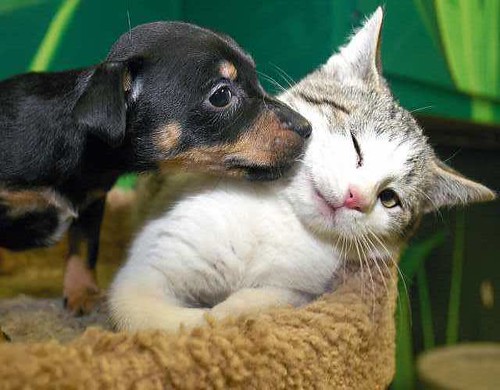
Photo credit: kojobaby (Creative Commons)
There’s much opportunity for an exciting exchange of ideas and skills between crocheters and knitters. So, as I ended my offering to this discussion on the forum, “Can’t we all just get along?”
References
(1) CHA Announces 2010 Craft Industry Statistics (April 6, 2011) In CHA. Retrieved October 26, 2011 from http://craftandhobby.wordpress.com/2011/04/06/cha-announces-2010-craft-industry-statistics/
(2) Passionate Consumers Pass It On! (n.d.) In CYC Press. Retrieved October 26, 2011 from http://www.craftyarncouncil.com/know.html

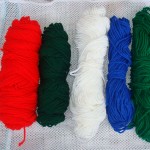
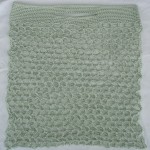
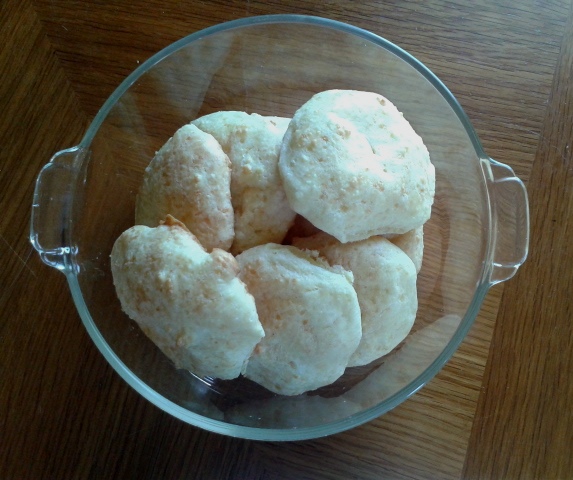
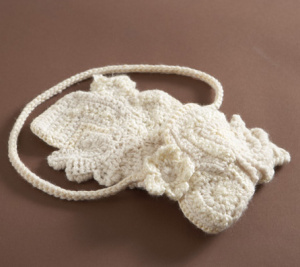

10 comments On Crocheters and Knitters, Can’t We All Just Get Along?
Your article and pictures are great! My sister-in-law and I have this discussion sometimes about crochet and knit. We do both, but she does more crochet and I do more knit. It’s good to be able to switch off because the muscle and hand positions vary and gives the body a rest, we thought. So glad that you posted this article here. I really enjoy reading your blog. 🙂
Hi Karen! So glad you like the post and my blog :-). I know what you mean about being able to switch off from time to time. Although I am definitely a confirmed crocheter, there are times when I just feel like knitting; it must be a different sort of gratification, or something. And it’s a good point you make about the different hand positions. Glad you and your sister-in-law or “getting along” :-). And thanks for reading!
I agree, we CAN just get along. Why certain people insist on being miserable is beyond me.
I find that in certain groups knitting is the preferred method and a second lowly class attitude or a “crochet is only for edging” attitude seems to persist. I tend to think that that attitude is deep in the person’s prejudices’ more than just mere crochet or knitting. They most likely feel that way about other things too like using acrylic yarn versus natural fibers. It might be a class thing who knows?
I enjoy both and I’ve knitted and crocheted with both acrylic and natural fibers and again, I enjoy both. If I could afford the higher end yarns I’d purchase it but God has seen fit to put me in an income level where acrylic is what I use most. I’m blessed to know how to crochet and knit and plan on adding other fiber art crafts like needle point, spinning and needle felting to my crafty knowledge.
Hey Sara, I agree with you whole-heartedly that we can indeed get along. Yes, there are a lot of ingrained attitudes out there about crochet, but I think with the huge upsurge of interest in it, we may get some converts, or at least people dropping a lot of the myths that have circulated about crochet for so long (see my comment to Ruth about the CLF article). I did a lot of different fiber arts back in the 70s like macrame, latch hooking, embroidery and sewing. Now it’s mostly crochet and knitting, although I’ve tried spinning with a drop spindle (not very good at it).
I like acrylic, too. Especially when it comes to making afghans. Plus, I’m a little allergic to wool and can’t use it as much as I’d like. But I’ve been experimenting with some natural fibers like hemp, bamboo, cotton, and blends to see what I can do with them. Typically, I use them in small projects because some can be expensive, like hemp, which has to be imported; states have to get DEA approval to grow it (I could write a whole article on the subject and I probably will at some point). But you can always find a good sale, so I say check them out if you can. Thanks for reading and commenting.
I crochet like crazy. I’d learn to knit, happily, but I have so many projects, I’d never get anything done. 😉
I work for a LYS that caters to knitters, but claim to cater to crocheters, too. They don’t, most of the hooks they carry are for knitters. The patterns and books are 99% knit patterns or books.
I will say that a knitter “spends less” than a crocheter, to make the same item. That might be why expensive LYSs have mostly knitters as clients. Personally, I buy what is on sale, to keep the cost down.
Thanks for the article. 🙂
Hi Ruth, interesting that you should mention that knitters spend less than crocheters to make the same item. I just ran across an article at the Crochet Liberation Front website. It’s about what the writer calls the “myth” that crochet takes 1/3 more yarn than knitting. The writer conducted an experiment to prove that crochet and knitting take the same amount of yarn when single crochet stitch is used. Here’s a link if you’re interested in reading it — http://www.crochetliberationfront.com/myth-busting-clf-style/.
I have two LYSs that I can go to now; one leans more toward knitting but the owner is not anti-crochet; she includes crochet classes in her class schedule (some of which I teach) and has a nice selection of hooks for sale. And while a lot of the yarn she sales edges toward the higher-end yarns, she does have a nice collection of reasonably-priced wools, superwashes, cottons, and blends. The other LYS owner knows how to knit and crochet, so she has more crochet-oriented items. Her yarns I would call expensive as well, compared to what you can get in the big chain craft stores, but the quality at both LYSs is a lot better, I think.
I know what you mean about have loads of projects to work on. All of the ones I’m currently doing are crochet, so I haven’t knit anything in a while; perhaps after the Christmas rush I’ll do another pair of socks. Thanks so much for taking the time to read and commenht.
Hello! I’m a crocheter – I have no idea how to knit. I tried to learn knitting first, but was a total fumble fingers with two needles. Using a hook is easier for me. I don’t have a problem with people who knit – I have friends who do each, either, both (and rug hooking to boot!) However, it is very true that there are some people who treat crochet as a “second class citizen”. And I do find myself a little irked at events, people, etc that say Knitting only, and assume that crocheters will accept that it means them, also. Then why not say Stitching? I don’t join knitting groups, because I want to discuss crochet, so why would I? And I don’t frequent LYS that don’t cater to crochet because again – why would I? They wouldn’t have the supplies I’m looking for! (Except yarn of course, and I’ll go ANYWHERE for the best yarn…mmmmmm) But, I’ve literally had a salesperson go “Oh.” when i say no, I crochet. And heard someone in a stitching group poo-poo crochet as “good for edging, anyway”. I’ll agree, we hookers tend to be independent and opinionated, but think about it – we’ve had to redeem ourselves after the atrocities of the late 60’s and 70’s. That’s been a hard road to climb. 😉
Hmmm … “redeem ourselves after the atrocities of the late 60s and 70s.” You might be stepping on a few crocheters toes, mine included, with that statement, Monica. Yes, some of those fashions might look ridiculous today, but you had to be there to understand it :-). That period saw a lot of creativity in crochet and was, in fact, the period during which freeform crochet had its birth, thanks to inventive crocheters like James Walters and the late Silvia Cosh. I think part of the problem back then was that there weren’t all the wonderful yarns that we have today, so most crochet garments were made with worsted weight yarn which isn’t a good choice for many garments.
Yes, there still are some fiber folk and LYSs out there that “poo-poo” crochet, and I agree, why support those stores and events? But there are also a lot more that do, and that’s a good thing. I’m just happy crochet has made such a strong resurgence, that top fashion designers have gotten on the crochet bandwagon, and that there are so many wonderful yarns to experiment with. Thanks so much for reading and commenting.
Very, very interesting article! I love to crochet but I also know how to knit. As a enthusiast of both needlearts, I have also gotten the impression that crochet was looked upon as the “step-child” in the knitting realm.
I learned to crochet when I was about 9 years old; I’m a self-taught knitter. Even though I love both, I tend to enjoy crocheting more because I can complete a piece faster, so it works a lot better for those of us who are challenged with ADD or get easily distracted by other projects.
I couldn’t be happier with the resurgence of crochet and its use in couture and the fashions we see on the runway. Don’t you just love the way Henry Holland uses granny squares in his garments for the “House of Holland”? Or the way Christopher Kane uses them in his pieces? The versatility of the granny square and its many uses, in addition to the use of crochet and knitted pieces in fashion and interior design, is worthy of celebration no matter which side of the needle you’re on!
Hey Mississippi Hooker (love the name, I’m HawaiiHooker on Ravelry), thanks so much for your thoughtful comments. I actually learned to knit first; mom taught me and a couple of girlfriends when we were 10 or 11. My aunt taught me to crochet when I was a teenager. So I was mainly a knitter until my 30s which happened to coincide with the resurgence of crochet in the 70s. I like how fast crochet works up, too, so I switched back then and now consider myself to be a crocheter, although I still knit from time to time. I think its good to know both, even if you have a preference for one over the other. And while I’m very familiar with Christopher Kane, I’d never heard of House of Holland, so had to look it up. Yes, I have seen his work on Pinterest, just didn’t associated it with a designer. Cool stuff all around!
Sliding Sidebar
Categories
Privacy Overview